 |
 |
 |
| |
Entecavir reduces the incidence of hepatocellular carcinoma
in patients with chronic hepatitis B
|
| |
| |
Reported by Jules Levin
AASLD 2014 Nov 7-11 Boston
Author: Tetsuya Yasunaka et al
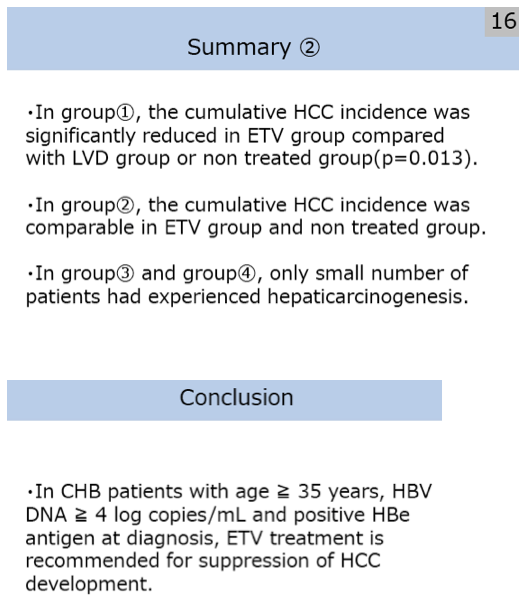
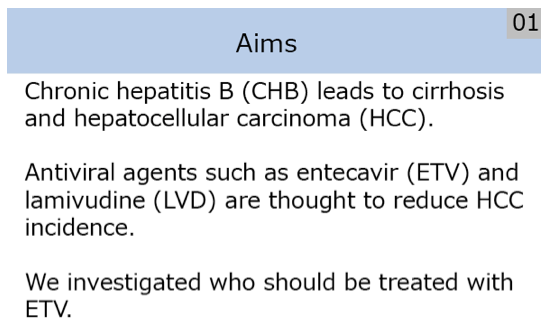
Program abstract:
Background & Aims: Chronic hepatitis B (CHB) leads to cirrhosis and hepatocellular carcinoma (HCC). Antiviral agents such as entecavir (ETV) and lamivudine (LVD) are thought to reduce HCC incidence, but the associations of those drugs with suppression of HCC development have not been clear.
Methods: Among 1203 CHB patients who visited Okayama university hospital or the related hospitals between 2011 and 2012. The incidence rates of HCC were compared among different patient groups of age, HBV DNA, HBe antigen, and treatment. The cumulative HCC incidences were analyzed with Kaplan-Meier method and log rank test.
Results: Among the 686 patients of age >= 35 years at diagnosis, HCC were observed in 115 patients with the mean observation period of 1687 days. Among the patients with HBV DNA >=4 log copies/mL and positive HBe antigen at diagnosis (n=184; 120 with ETV, 37 with LVD, and 27 with none, respectively), the HCC incidence rates were 8.4% in 5 years among those treated with ETV, 21.8% among those with LVD, and 26.4% among those without drugs, respectively. The cumulative HCC incidence was significantly reduced in ETV treated patients compared with those treated with LVD or none (p = 0.013). Among the patients with HBV DNA >=4 log copies/mL and negative HBe antigen at diagnosis (n=237; 128 with ETV, 19 with LVD, and 90 with none, respectively), the cumulative HCC incidences were 14.1% in 5 years among those treated with ETV, while 26.4% among those without drugs. The cumulative HCC incidence was comparable between the groups. Among the patients with HBV DNA <4 log copies/mL at diagnosis (n=265; 38 with ETV, 2 with LVD, and 225 with none, respectively), HCC were observed only in 7 patients (2 treated with LVD and 5 without drug therapy, respectively). The cumulative incidence rates of HCC were 2.5% at year 5 in the non-treated patients. Similar analyses were done for the patients with age <35 years. There were no significant differences in HCC incidence among the different patient groups during the follow-up periods.
Conclusions: In CHB patients with age >= 35 years, HBV DNA >= 4 log copies/mL and positive HBe antigen at diagnosis, ETV treatment is recommended for suppression of HCC development.

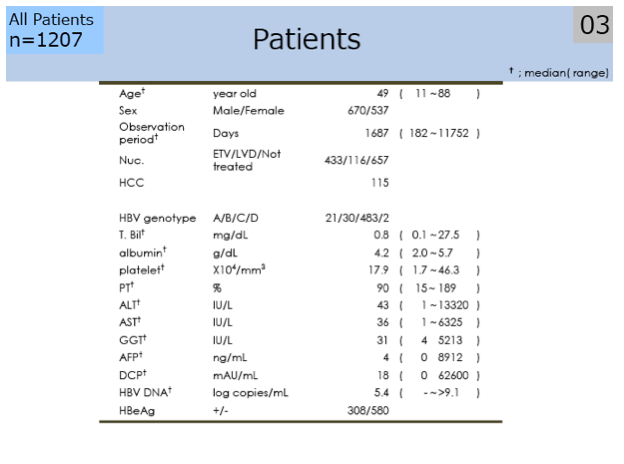
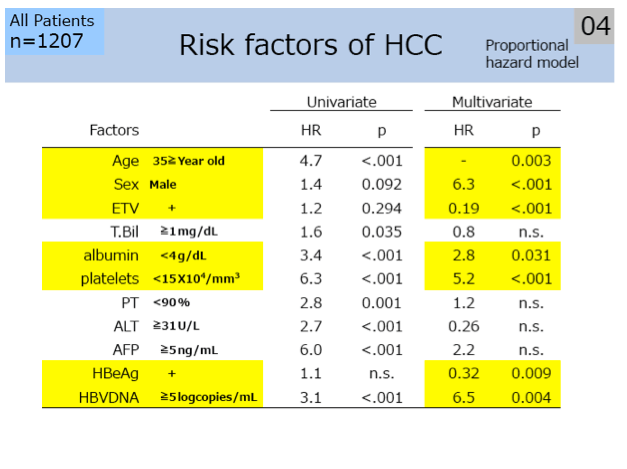
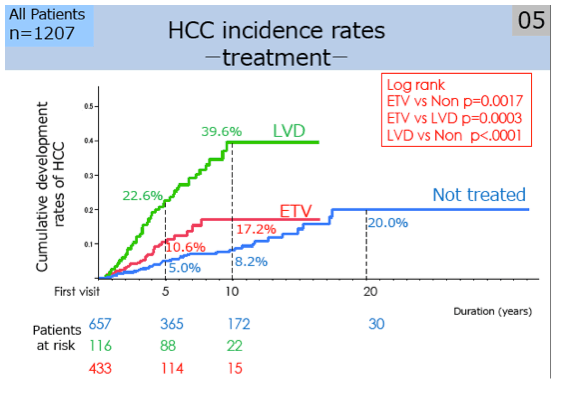
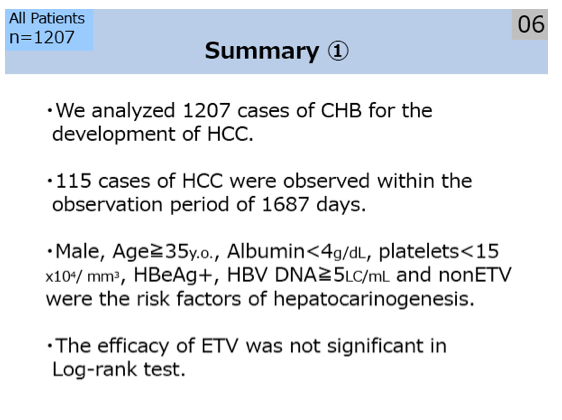
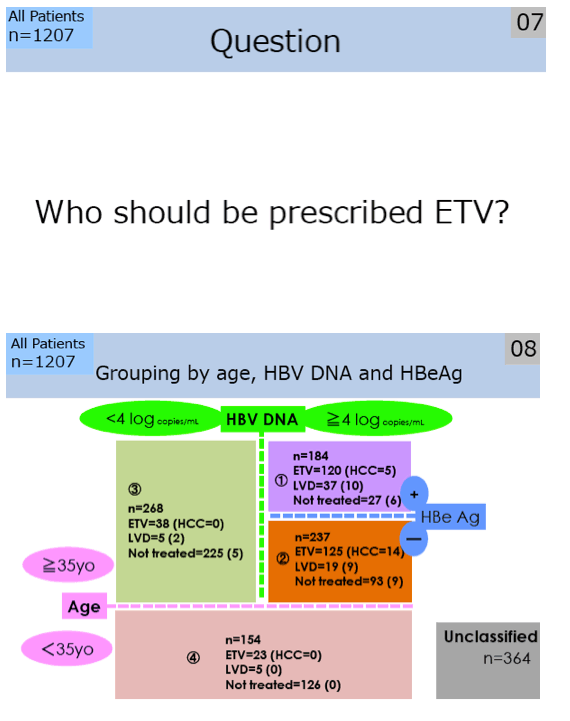
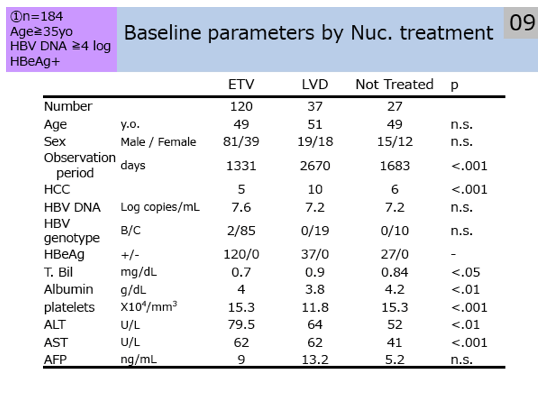
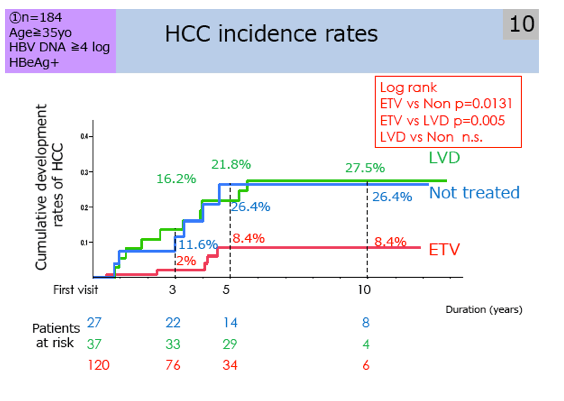
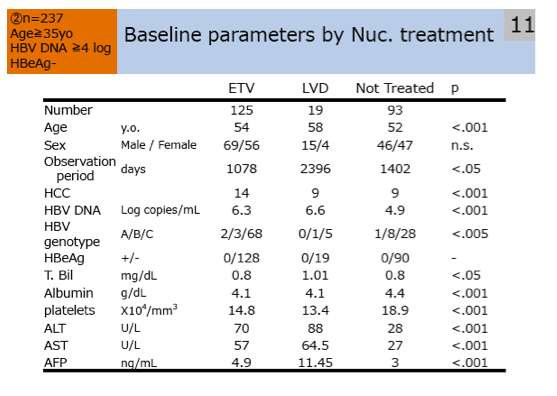
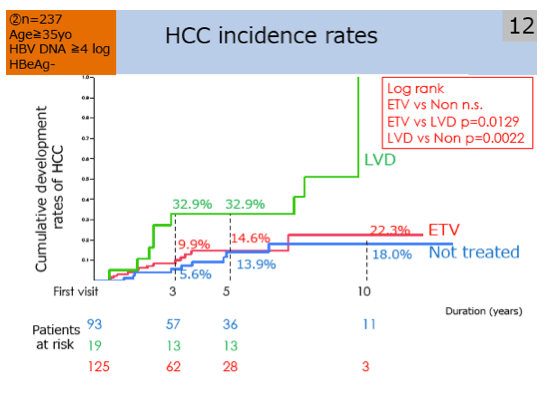
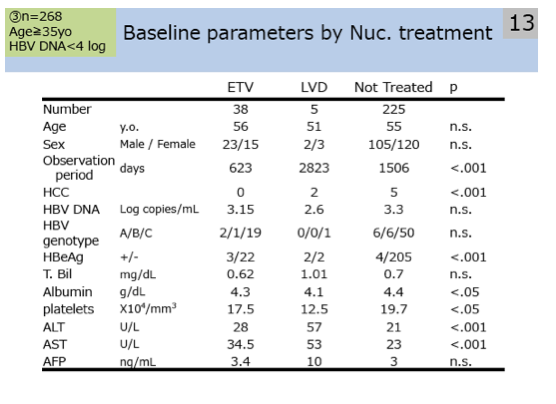
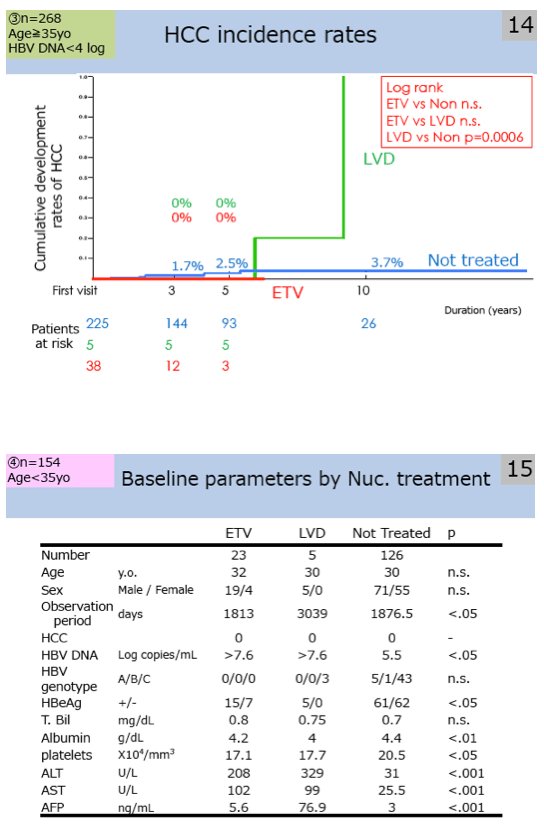
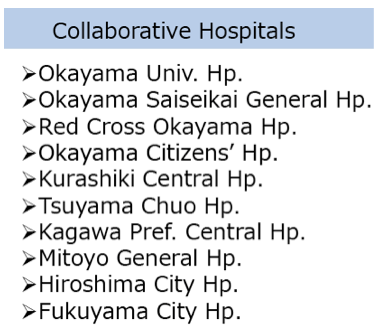
|
| |
|
 |
 |
|
|